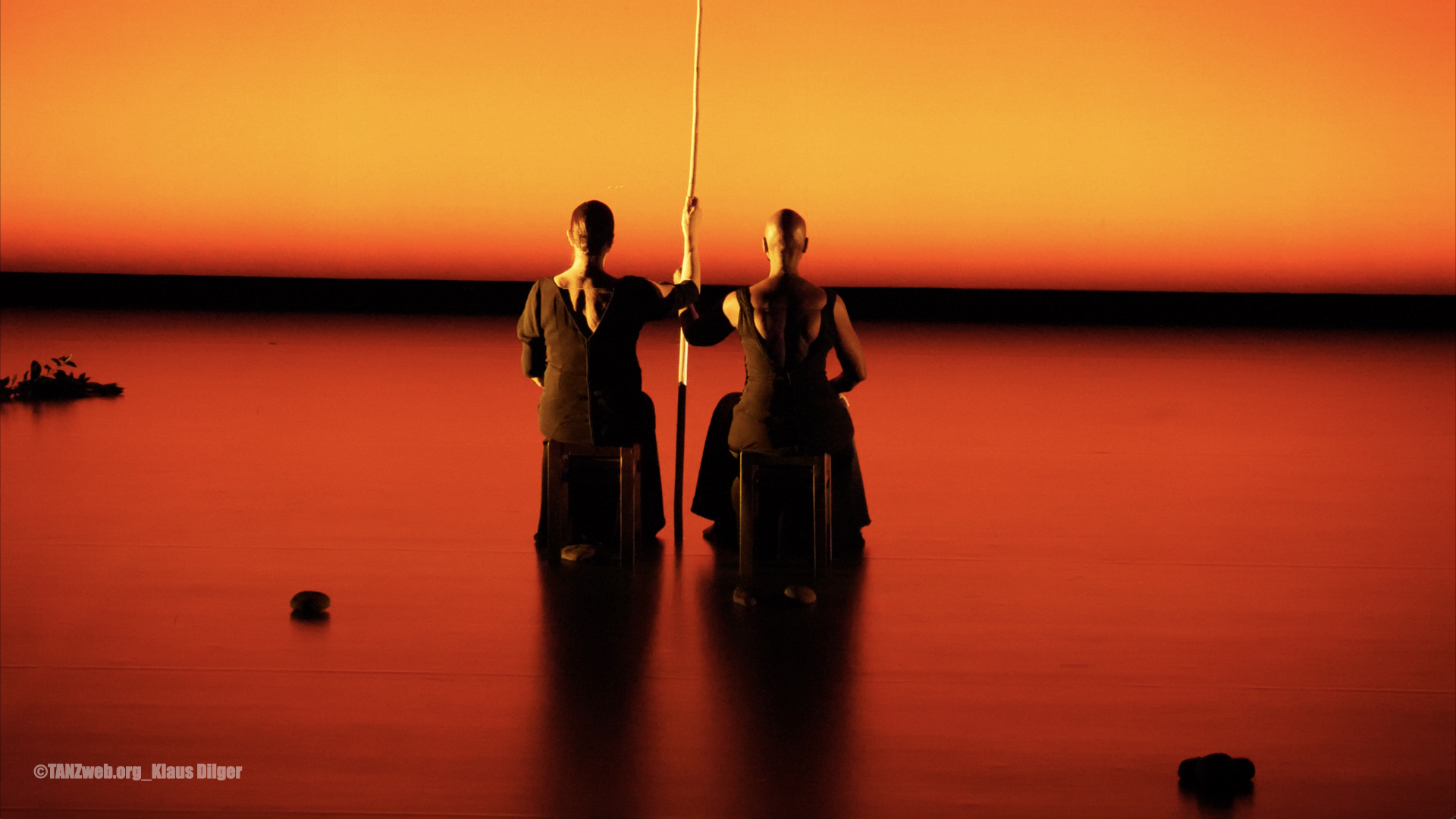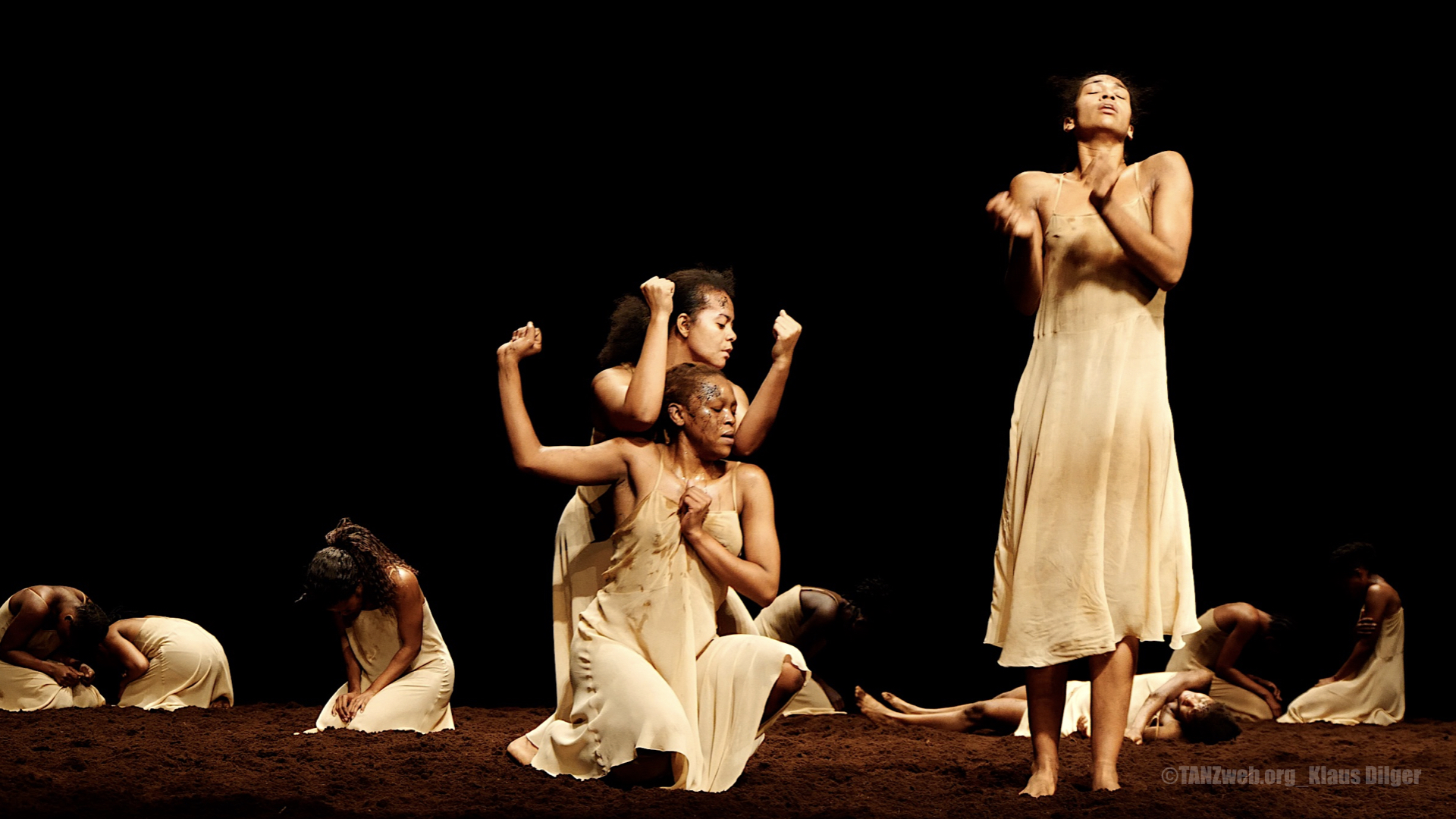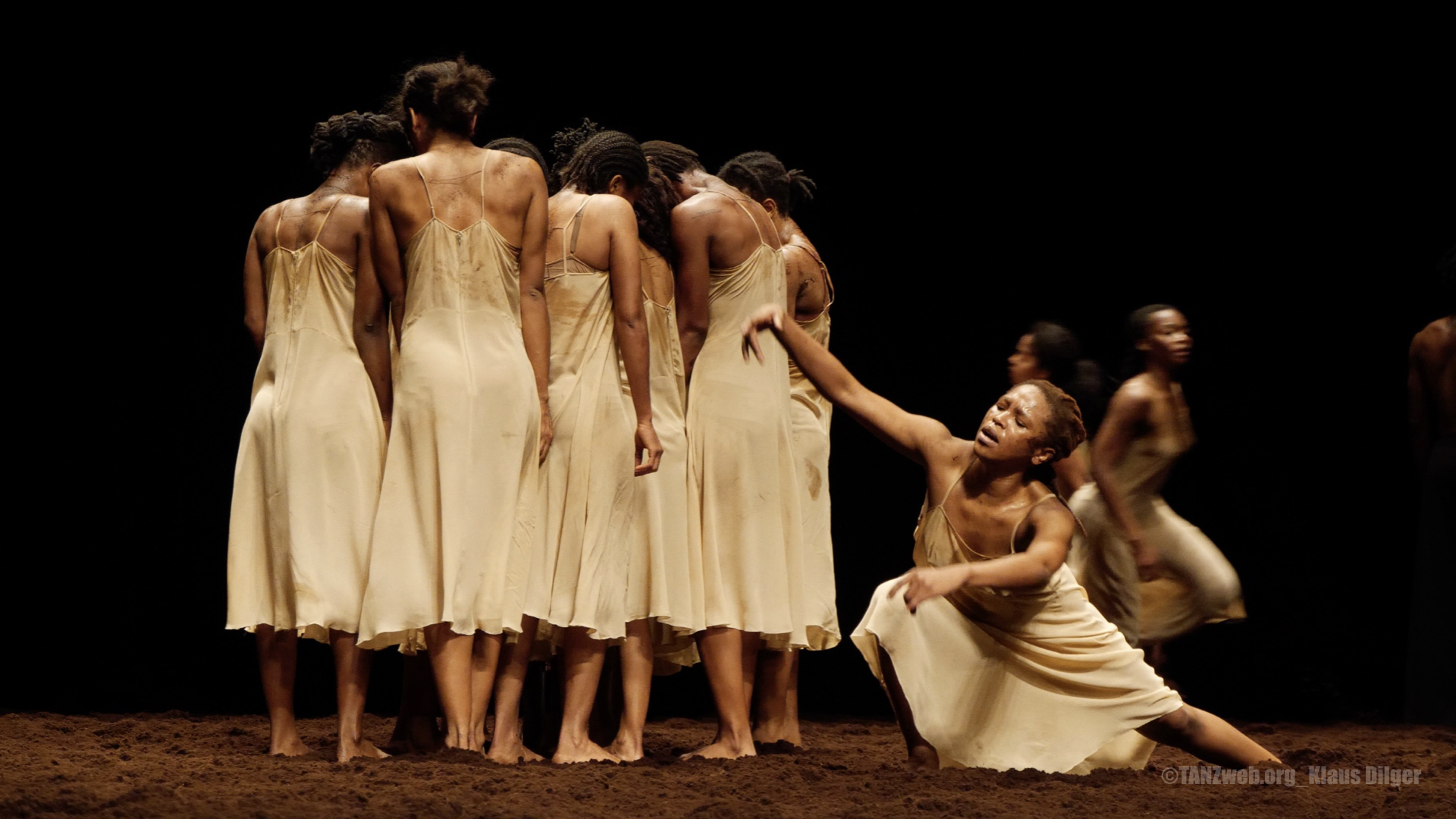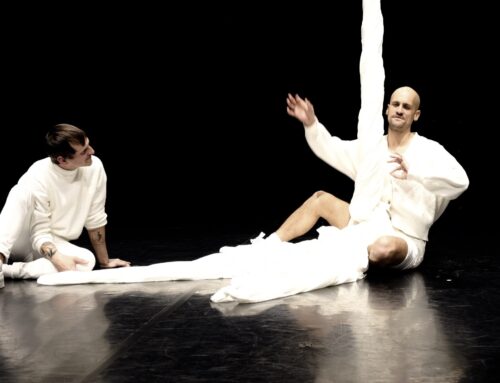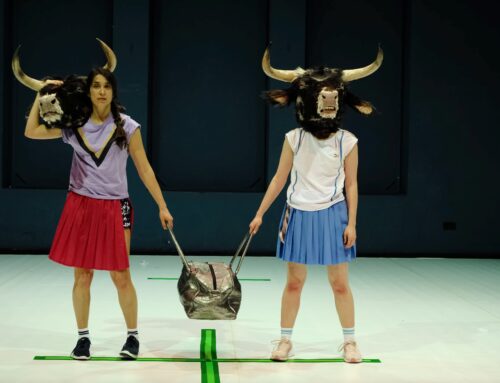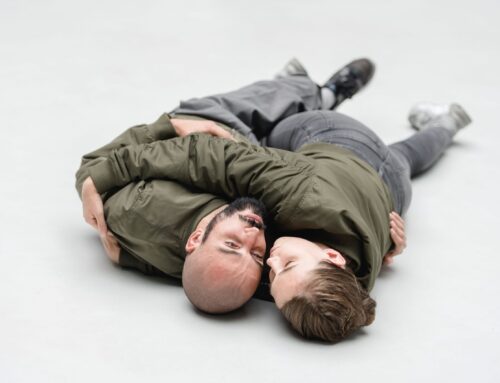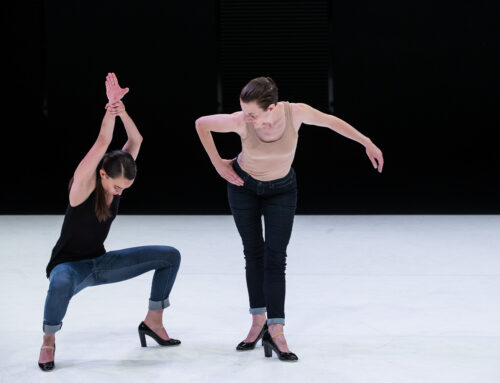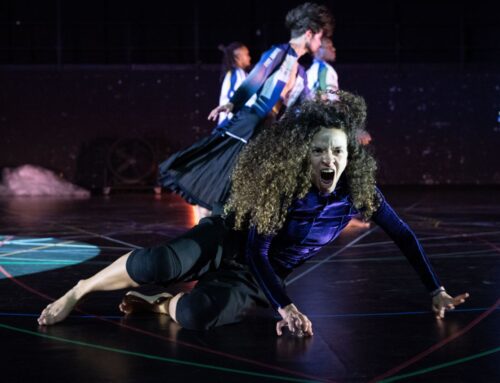Our Videoimpressions:
Overwhelming success at the schrit_tmacher Festival 2024 in Heerlen
„The Rite of Spring / common ground[s]“
Night review by Nathalie Broschat
Two dance pieces that at first glance seem detached from each other, but which together form a great whole.
First the calm duet by the two dance greats Germaine Acogny and Malou Airaudo, then the pulsating choreography „Das Frühlingsopfer“ by Pina Bausch with over 30 African dancers
Wow, what a huge project! In 2019, the Pina Bausch Foundation began rehearsing Bausch’s choreography „The Rite of Spring“ (French: „Le Sacre du Printemps“) with African dancers from 14 countries across the continent. A total of 38 dancers were cast in three cities in West Africa. The pulsating choreography was passed on through the bodies and knowledge of people who have danced it themselves. An extensive and invigorating project that came to a standstill shortly before completion due to the pandemic. The final rehearsal for „The Rite of Spring“ took place on the beach at Toubab Dialaw in Senegal and was spontaneously filmed by filmmaker Florian Heinzen-Ziob and his team. The recording of this rehearsal, interviews and much more information about this extensive project are wonderfully accessible on the website of the Pina Bausch Foundation. In this way, pinabausch.org documents, preserves and opens up the process of passing on the choreographies of this exceptional artist to all interested parties.
The world premiere of the new production of „The Rite of Spring“ could finally take place on 23 September 2021 at the Teatros del Canal in Madrid (Spain) and then go on tour internationally. Similar to Pina Bausch’s choreography of „The Rite of Spring“, which premiered in Wuppertal in December 1975, went around the world from 1979 and sealed its international breakthrough. The premiere of the original work „Le Sacre du Printemps“ with music by Igor Stravinsky and choreography by Vaslav Nijinsky for Sergei Djagilev’s company Ballets Russes took place in Paris in 1913 and stirred up the audience there and the common understanding of dance and music, thus ushering in dance modernism. In 1913, the ballet depicted a ritual in pagan Russia in which a virgin was sacrificed to the god of spring. In 1975, Pina Bausch examined more closely how the woman, the sacrifice, moves in the group and ultimately dances herself to death for spring.
And now, over 100 years after the premiere in Paris and almost 50 years after Bausch’s premiere in Wuppertal, her choreographic exploration to Stravinsky’s bombastic music lives on in the dancers‘ bodies. It is powerful, hypnotic and gentle at the same time. Gentle, because the group choreography „The Rite of Spring“ to live music by Philzuid from Eindhoven is preceded by the almost quiet duet „common ground[s]“ by Germaine Acogny and Malou Airaudo, which creates deep connections. Malou Airaudo, born in Marseille in 1948, trained there and worked in classical companies, not only learnt about modern dance in New York, but also met Pina Bausch. She brought Malou to Wuppertal in 1973 to join the newly founded company. Malou was a dancer with Pina from the very beginning and today rehearses her pieces with many companies and dancers, carrying on her choreographic legacy. Germaine Acogny was born in Benin in 1944 and is considered a pioneer of African dance. She not only founded the dance school „Mudra Afrique“, but also the „École des Sables“, with which the Pina Bausch Foundation and Sadler’s Wells collaborated for this production. Germaine Acogny has received several awards for her artistic work, including the Golden Lion at the Venice Dance Biennale in 2021 for her life’s work.
And it is precisely this dialogue between the two women’s life’s work as dancers that forms the first part of this evening. Germaine Acogny and Malou Airaudo exchange views on their artistic work and the dance knowledge inscribed in their respective bodies. They reflect on their position on the centenary work „The Rite of Spring“, as both have danced it. They search for „common ground[s]“, i.e. shared knowledge and points of reference. And so the duet develops a pull with every passing minute, accompanied by a composition by Fabrice Bouillon.
The two almost 80-year-old women move slowly and knowingly across the stage. The light sets the pace for this 30-minute confrontation: From the dawn to the dusky blue evening light. A day like a life on stage. Germaine Acogny and Malou Airaudo can be understood as the ancestors of the African dancers and the choreography of the second part; but we also see them very specifically as women in the face of their caring and nurturing roles. For example, we see washing troughs in which they conjure up their relatives; but we also see long sticks that they hold on to or prepare for a fight. Do they move with or against each other on stage? Do they walk together, or is the urge to overtake the other and obviously leave her behind stronger? A subtle confrontation of female competition and deep friendship between women becomes apparent. What sacrifices must these two women have made in their lives?
We applaud them both with the utmost respect and awe for their age, knowledge and bodies and are grateful for this introduction to the second part of the evening. Without Germaine Acogny, who has driven African dance forward, and Malou Airaudo, who carries Pina Bausch’s choreographic work into herself and onwards, it would not exist. A huge thank you.

